The public chain Solana DeFi performed very well, with its total value locked (TVL) and daily DEX trading volume exceeding US$4 billion. Led by premium DeFi 1.0 protocols such as Marinade, Phoenix, Jito, MarginFi, Kamino, BlazeStake, Solend, Jupiter, Meteora, Orca, Raydium, Lifinity, Sanctum and Drift, the Solana DeFi team is firing on all cylinders. These teams have weathered the FTX crash, built through the troughs of the bear market, and are now in harvest season.
However, the performance of new teams entering the Solana DeFi ecosystem has been somewhat lackluster, in part due to a lack of new narratives and fewer teams focusing on Solana’s new Only Maybe (OPOS) mechanism.
Now is the time to focus on new DeFi concepts and encourage more teams to build in the DeFi field, thereby driving Solana’s economic activity.
This article attempts to present the top 10 topics, each of which has related ideas worth exploring. Although we focus on Solana, some of the topics can be applied to other energy-efficient chains as well.
In this article we will discuss:
- DeFi Stablecoin
- LST, MEV and re-pledge
- currency market
- interest rate derivatives
- RWA and DeFi Composability
- Perpetual Contracts and Derivatives
- DeFi infrastructure
- MemeFi and Social DeFi
- Protocols tend to become platforms
- Interface (UX Aggregator)
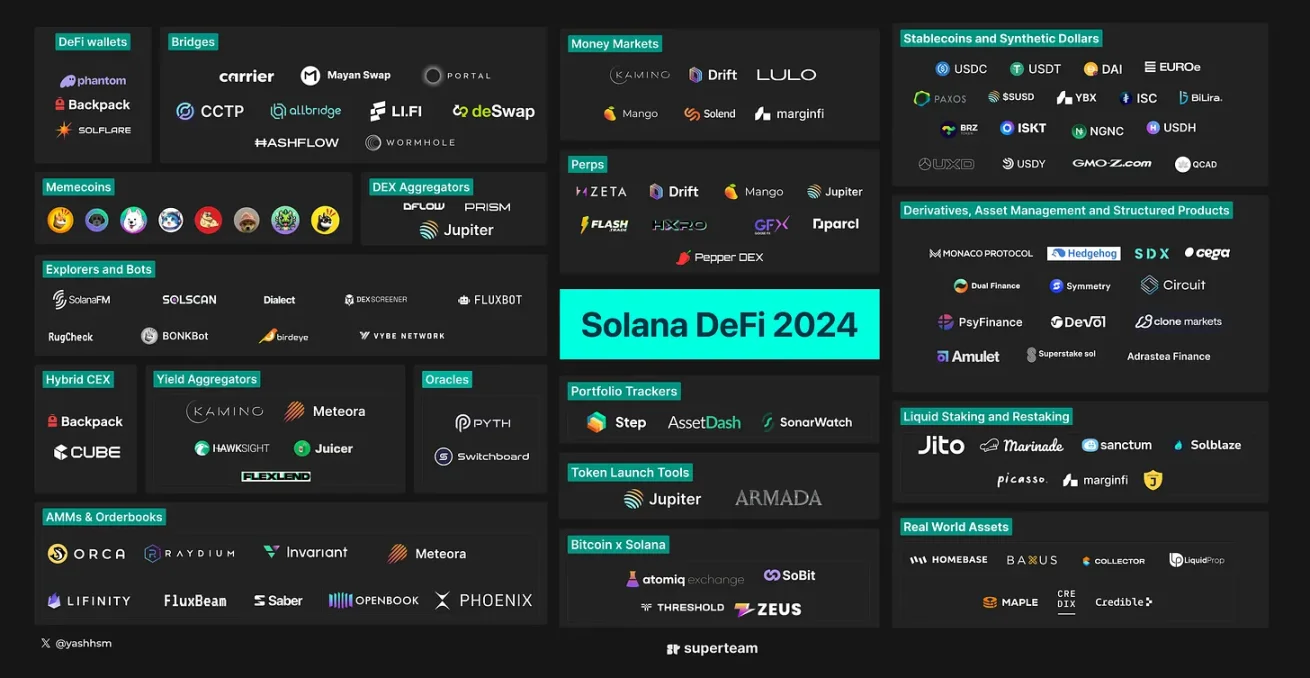
Theme 1: DeFi stablecoin mechanism will become more diverse
We need more DeFi native stablecoins as DeFi currencies to form liquidity pairs in DEX and lending projects. Primarily, their utility is driven by yield. DeFi stablecoins lack utility as a medium of exchange (i.e. used for transactions).
Stablecoins or synthetic dollars can broadly be divided into the following categories:
- Stable coins supported by fiat currencies, such as USDC, USDT and EURC. M0 is another upcoming stablecoin player on Ethereum.
- CDP stablecoins such as DAI and Frax.
- Stablecoins supported by LST include:
- CDP structures such as Lybra's eUSD and Prisma's mkUSD.
- Delta neutral projects like Ethena and Resolv Labs (UXD on Solana is the pioneer).
- Stable coins supported by RWA, such as USDV, USDY, USDM and ISC.
- Perpetual DEXs that offer their synthetic versions, such as Synthetix (sUSD) and Aevo (aUSD).
- Algorithmic stablecoins, such as Gyroscope, use segregated treasury reserves to reduce associated risks and implement dynamic stabilization mechanisms that utilize the diminishing bond curve for redemptions.
On Solana, two LST-backed stablecoins are emerging: MarginFi’s YBX and Jupiter’s SUSD, as well as very early-stage projects like Surge Finance.
Alpha suggestions for Builder:
- Updated design mechanism, drawing inspiration from Ethereum stablecoins.
- Market Entry Strategy: Most stablecoins struggle with initial liquidity and traction; since the primary utility is yield, this can be an interesting play. For example, increasing DAI's Enhanced DAI Savings Rate (EDSR) resulted in an increase in the circulation of DAI, which increased DAI deposits by approximately $1.5 billion (approximately 30% of the total DAI supply). USDV provides revenue to verified miners such as DeFi projects to increase circulation, which can then also provide rewards to its users (think of how Arbritrum DAO provides ARB to projects that distribute ARB to users).
- The most popular Ethereum stablecoin Ethena (issuance volume exceeds 1.3 billion US dollars) is also about to be launched on Solana. One can also build a "Solena", which has similar mechanics to Ethena, but uses SOL. However, the CEX listing of Solana LST and the depth of the SOL perpetual contract are a major hurdle, but will surely be reached slowly.
The case of on-chain foreign exchange (FX) market
The foreign exchange market is huge, with daily trading volume exceeding US$6 trillion. The emergence of fiat-backed stablecoins with sufficient liquidity may pave the way for the development of spot foreign exchange markets on the chain through order books and automated market makers (AMMs). Imagine that merchants can accept payments in USDX and instantly convert them to YENX, routing transactions to multiple liquidity venues through Jupiter. Sooner or later, someone will build a spot foreign exchange trading platform on Solana.
Topic 2: (Re) Pledge and the currency of LST-SOL
Solana's LST scene is now consolidated into three major players: Jito, Solblaze, and Marinade. Sanctum is another interesting player in the LST space, solving the liquidity problem and building LST as a service. However, the number of LSTs is still very small, and more LSTs would also be good for network decentralization. In addition, LST is a major contributor to DeFi, and increasing their deposit volume in the lending/borrowing market or LP pool will increase the total value locked (TVL) on the chain.
Alpha suggestions for Builder:
- More LSTs: Supported by token issuance hype and incentives, there is still a chance for new LSTs to enter the market and capture a significant share of LSTs. For example, Solblaze grew from $30,000 SOL to $3 million SOL in just 8 months by leveraging BLZE incentives and focusing on DeFi integration.
Another strategy is to follow new design mechanics. For example, follow the dual-token model of Frax Ether (over $1B TVL), which has two tokens:
. frxETH: It is linked to ETH 1:1 and does not accumulate staking income.
. sfrxETH: Accumulated staking income.
This enables staked ETH to earn higher returns while ensuring frxETH has deep liquidity and full ecosystem integration. Compared to similar products such as rETH, frxETH also has a higher DeFi TVL due to Fraxlend integration and liquidity incentives.
- Validators launching LSTs: As MEV and priority fees increase, we will likely see validators launching their own LSTs and sharing more rewards with stakers to attract stakers. Sanctum is a key project in driving this change.
- LST revenue maximizer: For example, Kamino Multiply provides a one-click treasury product designed for leveraged returns on LST through a loop (pledge LST and lend SOL → pledge SOL for LST → repeat). There can be a huge number of products in this space (more on that later).
- SOL re-staking: Solana also has the opportunity to adopt a shared security/re-staking layer similar to Ethereum, allowing projects to further increase their income through re-staking and access the best validators. Unlike Ethereum, Ethereum's AVS is a rollup/application chain/bridge that requires economic security, and Solana has not yet adopted modularization.
However, this is still worth exploring, because AVS on Solana can be a Clockwork-style Keeper network, a Python-style application chain, or any network like DePIN that requires economical security and "SOL alignment". Additionally, if the Rollapp/app chain perspective on Solana is accepted, the SOL re-staking narrative could be huge!
- Regarding MEV: Recently, Jito Labs suspended the mempool service provided by Jito Block Engine due to an increase in sandwich attacks. The decision sparked mixed reactions within the community, with some appreciating Jito's positive attitude, while critics believed it could lead to side deals and the possible development of new, private mempools in response.
- As DeFi activity increases, MEV will only increase, and projects (and LST) can take full advantage of this.
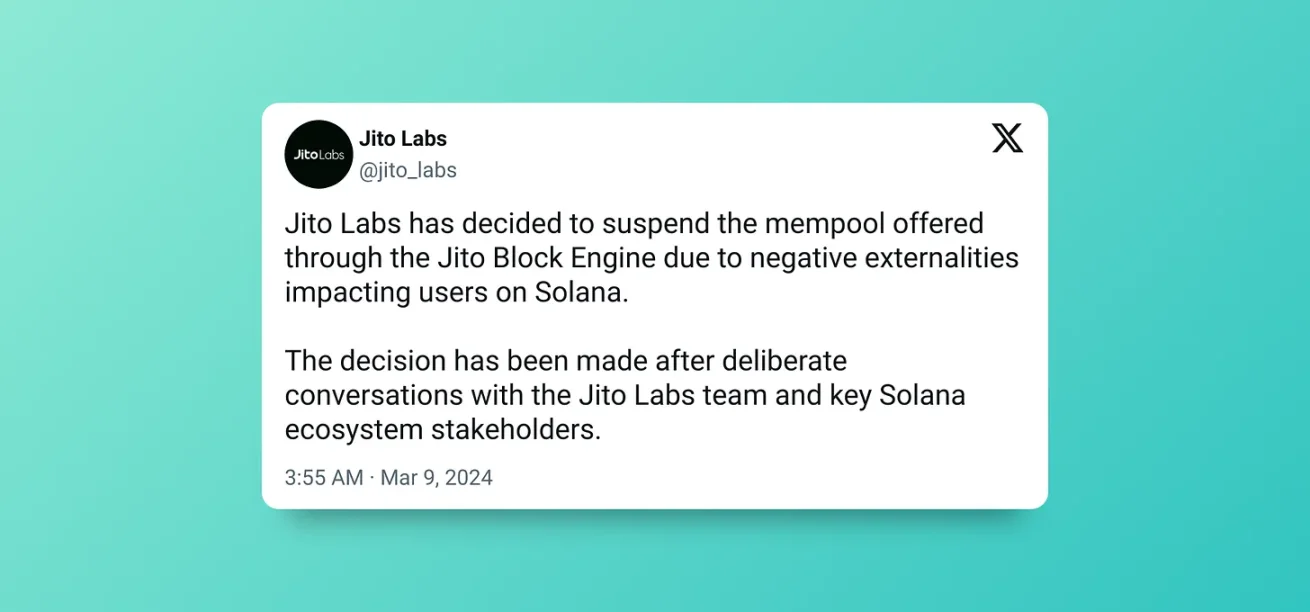
The amount of SOL in LST is still unsatisfactory (<5%) compared to Ethereum, and this needs to be addressed. Overall, now is the time to increase the monetization of SOL and ensure that increases in SOL prices are also captured by the DeFi ecosystem.
Topic 3: Next Generation Money Market
While core currency markets (lending) such as Solend ($300 million), MarginFi ($800 million) and Kamino ($1.1 billion) are already established, it is time to innovate on the design mechanisms to make them more efficient. For example, MarginFi still lacks eMode to improve capital efficiency (a feature of Aave v3).
Focus on higher capital efficiency: As blue chip lending/borrowing like MarginFi and Kamino consume their points and issue tokens; users will want higher capital efficiency, especially for the liquid staking market.
Alpha suggestions for Builder:
- New design mechanisms: For example, some interesting mechanisms explored by the EVM project are:
Alchemix offers self-paying loans that allow you to leverage a range of tokens without the risk of liquidation.
Modular architectures such as Euler v2 are composed of ERC-4626 credit libraries (lending pools) connected through the Ethereum Vault Connector (EVC) contract. This also allows Builders to create and activate lending vaults with various configurations without permission, such as selecting any collateral, selecting oracles to set TVL, interest rates, etc. This can create network effects and compound liquidity, as shares of one vault can be used as collateral for any other vault within the Euler ecosystem.
Morpho Blue improves capital efficiency.
It doesn’t hurt to get inspired by upcoming Ethereum protocols and innovative designs. Better than just forking Aave v3.
- Optimizer for existing money markets: Taking MarginFi's SOL market as an example, there is a considerable gap between lending and borrowing returns, and this situation applies to almost all markets. This is because of the liquidity pool mechanism and insufficient pool utilization, resulting in lower yields: [Supply rate = Borrowing rate * Utilization rate].

One possible solution is to build something like the Morpho Optimizer, where the liquidity provided is dynamically matched to peers as borrowers come and go (effectively 100% utilization). For matched liquidity, the lender’s rate of return is the same as the borrower’s rate: matched lenders do not share interest. In the case of unmatched liquidity, it will access the underlying lending pool, such as MarginFi or Kamino. Altitude is also a good reference. Flexlend and JuicerFi are great for building this.
- Fixed-rate loans: Most current P2P lending protocols (such as MarginFi and Solend) follow floating (variable) interest rates, and low utilization rates lead to high interest rate spreads, essentially establishing a banking system similar to TradFi, with high interest rate spreads but with The pool acts as an intermediary. Fixed-rate loans are one way to solve this problem.
DeFi’s fixed rate market share is below 1%, while TradFi’s fixed rate dominance is around 98%, due to several reasons:
Passive: The peer-to-pool model has no expiration date and therefore requires much less maintenance.
Lindy Effect: Floating rates are battle-tested, leading to a Lindy effect like sticky TVL.
As the Delphi report points out, fixed-rate loans in DeFi still don’t exist. The shutdown of the Yield protocol, the shutdown of v2 of Notional Finance (which started with $1 billion TVL and is now down to $17 million) shows a lack of demand. Notional Finance's v3 launch moves to variable loans and leveraged vaults. Exactly Finance built some momentum and brought new ideas, but the use was incentivized by the OP and native token emissions were heavily incentivized. Term Finance is another project worth watching. A team that solves all the pain points (like maintaining a loan easily) and launches it with incentives can win over a potentially large market here.
Lulo Finance (the same team as Flexlend) has been trying to solve this problem on Solana but hasn't seen any significant traction yet. While fixed rates have their problems and were "ahead of their time," it's worth exploring them.
- Gearbox by Solana: Gearbox is a composable leverage protocol (leverage gained through borrowing and lending, but with ecosystem-wide integration). Solana is highly composable in nature and can be integrated with multiple protocols such as AMM and LST. Assuming the market is bullish, more projects will launch high APY incentive plans that can be integrated into this protocol for leveraged liquidity staking.
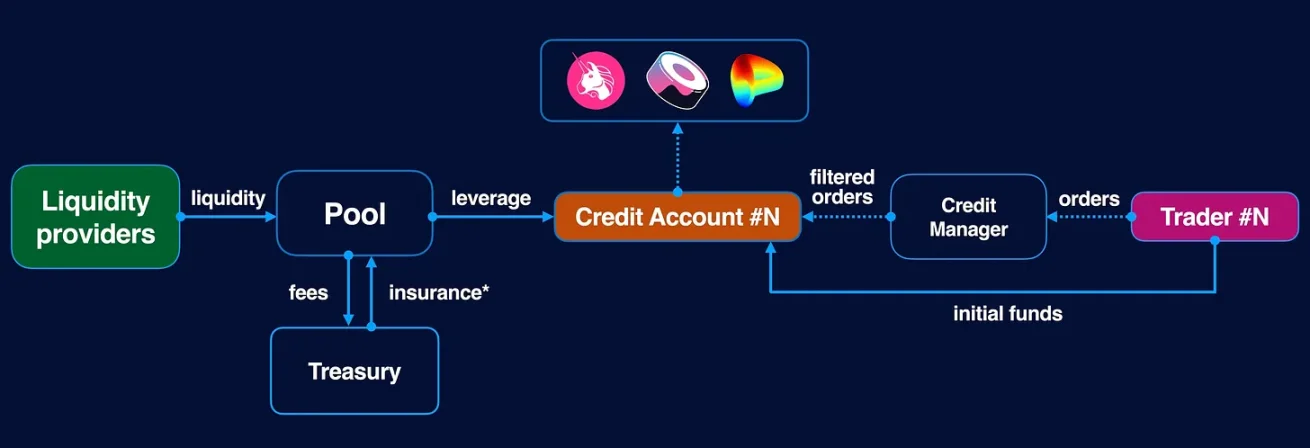
A close idea could also be corporate debt, where companies generating revenue on-chain could start issuing bonds to raise capital. Think of it as revenue-based financing (RBF), but on-chain and fully transparent. This ensures that profitable on-chain companies raise funds without diluting their tokens.
Topic 4: Interest Rate Derivatives – Uncharted Territory
Interest rate derivatives (IRD) are the second largest market after foreign exchange, with a nominal value of US$450-600 trillion. The absolute number comparison with TradFi may not be directly relevant. However, the emerging nature of the DeFi market, and Solana in particular, offers significant opportunities. In addition to generating money market (loans/borrowing) returns through asset management contracts, this can also facilitate the generation of organic returns.
Alpha suggestions for Builder:
Taking inspiration from TradFi, there are some interesting ideas to explore:
- Interest rate swap for LST: This is a forward contract that typically allows parties to exchange a fixed rate for a floating rate and vice versa. In short, if you want a fixed staking rate, you sign an agreement with someone who is prepared to take the risk of a variable staking rate.
This will be very attractive to a new class of institutional and retail clients looking to gain DeFi exposure without too much speculation. In TradFi, the swap is between two financial institutions, while in DeFi it will be peer-to-peer. People can choose to pay a fixed benefit or receive a fixed benefit. LSTs like JitoSOL or mSOL are the best target assets through dividend rate swaps (SRS), as they are considered the "risk-free rate" of SOL in DeFi.
- ERC-4626 is the yield token vault standard on Ethereum, ensuring composability of all yield vaults with a TVL in excess of $10 billion. Building on Solana and ensuring its adoption may be key. This could unlock a range of treasury products such as Sommelier
- For Solana's Earnings Peel (Pendle): Earnings Peeling is a cash flow discount game. Users can obtain predictable returns on the future value of the instrument, while speculators can obtain future assets at a discount. It involves separating a bond's interest payments from its principal payments. Pendle’s revenue tokenization is an implementation of this.
Some examples of Solana earnings that can be traded include: liquidity-staking SOL, Lifinity earnings, Meteora Pool earnings, Kamino_Finance kTokens, and Solend Protocol’s cTokens (yield deposit receipts).
An early-stage project called Exponent is exploring this direction, starting with MarginFi's loan yield trading and then expanding the suite to other yield derivatives. Solana DEX is also exploring "Pendle for Solana".
Topic 5: Making RWA and DeFi composable
As more RWA is put on the chain, especially liquid and income-bearing assets like treasury bonds. Logically, all RWAs are permissioned due to KYC and regulatory restrictions. However, Ondo’s launch of USDY, a tokenized Treasury bond, and its permissionless nature opened up a whole new design space. Ondo also demonstrated an interesting mechanism for tokenizing stocks that, if implemented correctly, could spark another wave of DeFi composability.
Alpha suggestions for Builder:
- Token Extension Kits: There are many opportunities when it comes to RWA, especially with token extension kits. Our article delves into these details.
- TradFi Giants: With giants like Franklin Templeton, BlackRock, and Fidelity looking to pilot RWA on Solana, this could unlock huge opportunities over the next 1-2 years. At first, these could be permissioned, but building permissionless wrappers and more DeFi integrations (such as Flux Finance for lending) could be a significant opportunity. For example, holders may have the opportunity to earn higher yields by tokenizing U.S. Treasuries, offering them as collateral on the DeFi lending market, borrowing stablecoins, purchasing more Treasuries, and repeating the cycle.
It is said that BlackRock funds and USDC can be combined.
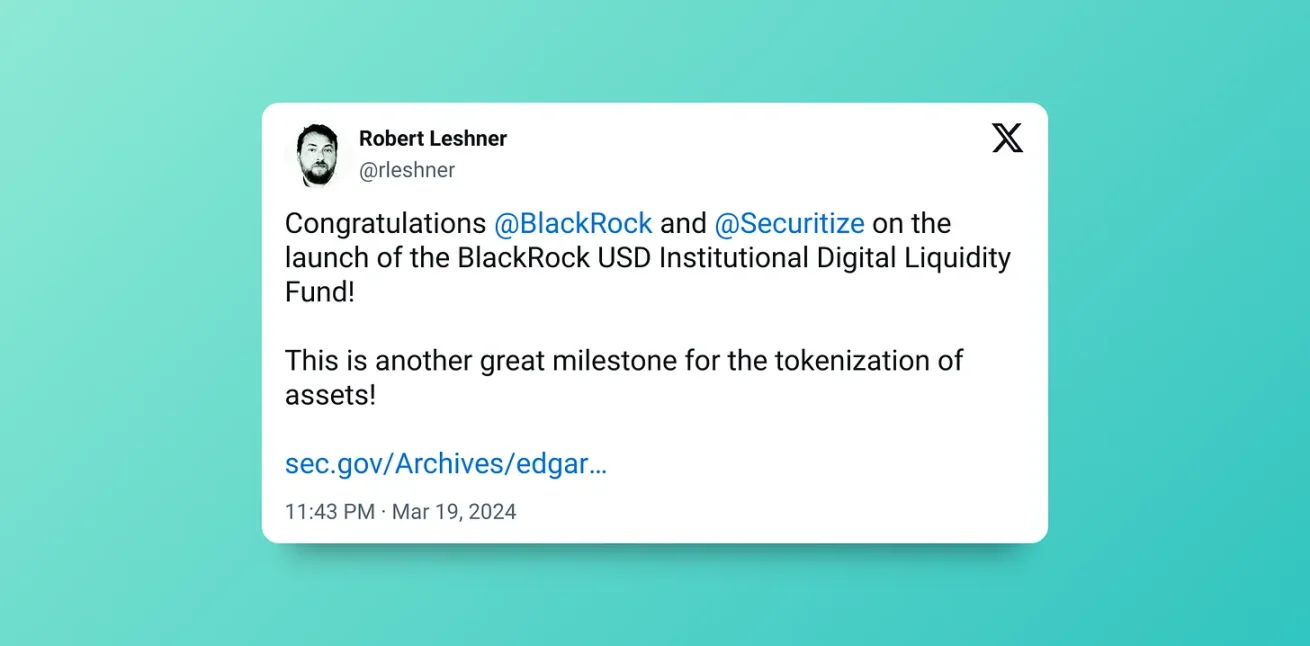
Topic 6: The era of derivatives has arrived!
During the last bull market, structured products and on-chain derivatives (excluding perpetual contracts) were all the rage. Especially for Solana, before the bear market, the TVL of DeFi Options Vault (DOV) surged by more than $500 million through protocols such as Ribbon, Katana, and Friktion. However, as the bull market returns and demand for yield increases, it's no surprise that these products are making a comeback.
Alpha suggestions for Builder:
- Vertical Perpetual Contracts or Prediction Markets: Just like Parcl allows people to long/ short, one can build perpetual contracts for different market segments such as commodities. This is a highly creative category game and Parcl is creating hype and amassing over $100 million in TVL.
- Power Perpetual Contracts: This is an idea proposed by Paradigm in 2021 that didn’t really take off in the last cycle due to timing issues, but is worth a try in this cycle. Several protocols like Exponents are trying this on Berachain. Another adjacent idea is to explore perpetual options (think perpetual contracts are to futures what they are to options), which was proposed by SBF.
- Perpetual Contract Aggregator: Just like we have aggregators for lending and spot DEX, building a perpetual contract aggregator is a big enough opportunity despite the challenges posed by different design mechanisms. With the emergence of perpetual contract aggregators like Rage Trade and MUX, a similar trend may emerge with Solana, especially with designs like Flash and Jupiter.
- Perpetual contracts on the Solana application chain: In the EVM world, most order book-based perpetual DEXs, especially those like Aevo, dYdX and Hyperliquid, are transitioning to their own application chains. In the future, the Solana sustainable DEX can also build its own chain, which may provide several benefits:
- Protected from any mainnet congestion
- Provide users with an improved trading experience (transactions can be gas-free for traders). In fact, Zeta is already starting to move in this direction.
- Structured product: Build a Friktion-like product. In fact, the Friktion code is still available for anyone to fork and use. An asset management protocol like Investin (a previous project by the Flash team) might also be a good idea for revival. Order books like Phoenix or Drift need to actively provide liquidity, which can be achieved through market-making vaults. This ensures decentralized market making, otherwise all liquidity would be controlled by market makers (we witnessed what happened with Alameda after the FTX crash).
- On-chain options: Protocols like Ribbon, Ava, and Gravity Markets serve as examples of existing on-chain options trading platforms. One can also construct binary options like Decalls (where the price goes up or down), but it is important to gain traction and build a moat.
- HXRO: As the base layer for Solana derivatives and liquidity staking, builders can build on top of:
- Dexterity, Hxro’s derivatives protocol, provides the basic building blocks of derivatives (whether it is a traditional DEX interface, a high-end trading terminal, an API, etc.) for on-chain expiration, perpetual and zero-day expiration futures and other margin-based futures. Derivatives markets provide all necessary risk and exchange infrastructure.
- Hxro's parimutuel protocol is the backbone of on-chain betting applications, enabling event betting with continuous liquidity through the network's "smart" AMM. The protocol can support a variety of on-chain betting markets for gaming, sports betting, cryptocurrencies and other active markets.
Topic 7: Building infrastructure and tools for DeFi protocols
With many billion-dollar DeFi protocols emerging on Solana, now is the perfect time to build the infrastructure and tools for these DeFi protocols.
Alpha suggestions for Builder:
- OEV: A subset of MEV, Oracle Extractable Value (OEV) refers to an application's reliance on Oracle updates so that arbitrageurs or liquidators can exploit this state inconsistency. As mentioned by multicoin, there is an opportunity for applications to capture OEV.
DeFi Infrastructure as a Service: Several protocols like Aave/Compound have been forked multiple times; the same is true for Solana, where the protocol forked Solana Lab’s reference implementation. There are considerable costs in terms of development, auditing and maintenance. A sustainable development company can be standardized and built to provide a "plug-and-play DeFi protocol" - it can also be regarded as the "Metaplex of DeFi". Rari Capital (now defunct) had a similar vision and The treasury infrastructure was established. One result is building ERC-4626 equivalent infrastructure for Solana and taking full advantage of Solana's yield hype by servicing DeFi projects.
- Risk management organization: This can be structured as a risk DAO or advisory committee to conduct research and risk analysis for DeFi protocols. These entities can release public "risk analysis dashboards" with key indicators of the Solana ecosystem, and provide paid research, risk assessment frameworks and risk rating services to DeFi projects.
- Bribing aggregators or markets: In EVM, Curve Finance lets its token holders decide how much token incentive to allocate to each of their pools. This creates a dynamic where projects "bribe" token holders to vote for pools containing their tokens. Votium Protocol aggregates these bribes and automatically represents the voting power of token holders to maximize the incentives received. Having an aggregator makes it easier to coordinate activities between bribers and voters and leads to greater market efficiency. On Solana, this can be applied to:
- LST transfers equity directly to validators through governance tokens
- Jupiter LFG Launchpad, projects can bribe their voters and offer token distributions in return
- Privacy in DeFi: Privacy finds product-market fit in unexpected places, like airdrops. For example, centralized exchanges are also used by large players to anonymize their transactions, so protocols like Elusiv are heavily used as a result.
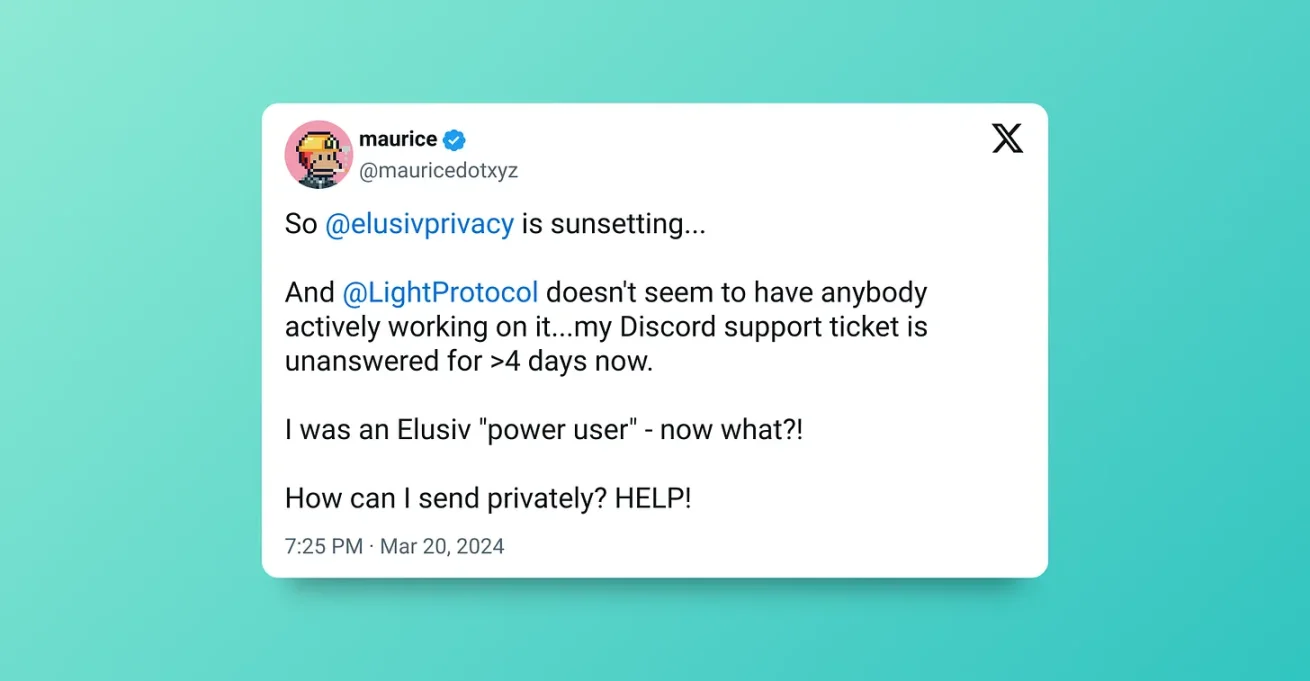
Topic 8: MemeFi and Making DEX are more vertical
Meme currency is a financial culture. Their value comes purely from attention and social consensus. We may be in a meme coin super cycle with Solana as the front end.
In addition, DeFi applications will also become more social. We're already seeing some early trends:
- Buy through Telegram bots like Bonkbot, which has a daily trading volume of $250 million!
- Projects like Zeta or Kamino have public rankings.
The next front-end of DEX is likely not to be a Jupiter-style exchange interface, but a live broadcast platform where creators and viewers place bets together, a social feed with trading integration, or other network status.
UI layer composability: Telegram Robot makes the UI of DEX composable. Previously, people would find information somewhere on the Internet (X, Reddit, News, Telegram, etc.) and then navigate to a separate UI to trade (eg, Drift, Binance, Coinbase, etc.). Telegram bots bring transactions to Telegram, where people are already gathering, socializing, and exchanging information.
Alpha suggestions for Builder:
- Continuous prediction market powered by Meme coins:
- Existing prediction markets such as Polymarket are binary and discrete, so the upside potential is very limited. Most people want continuous, unlimited upside. A native crypto prediction market could actually be a meme coin (e.g., $BIDEN, $TRUMP). One could build a niche platform dedicated to trading meme coins (for example, a political platform that trades all political meme coins and predicts who will win). In fact, MetaDAO is an example of a vertical and continuous prediction market, but only for governance.
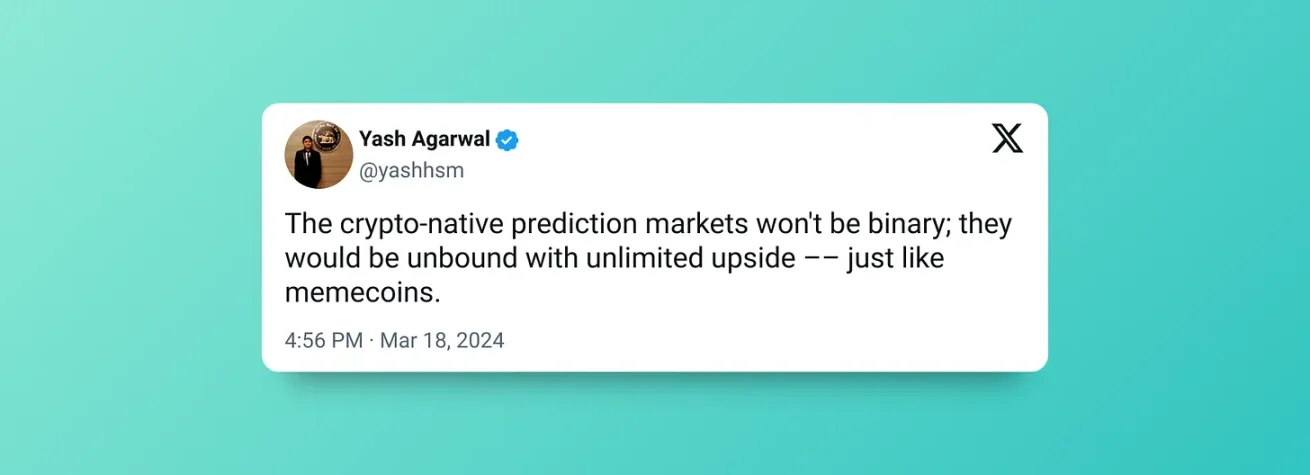
- Meme Coin Frontend: The user experience for trading meme coins is still not optimal: one needs to discover the meme coin, check all its details on Birdeye or DEXscreener, and then trade on Jupiter, and for many early meme coins, wallets don’t even exist Basic support. One could simply make a website like Birdeye, but dedicated to meme coins, more social, where big V bloggers could also praise each other and copy trades. Pump.fun is another interesting platform where people can join meme coins very early (until $69,000 market cap). Another adjacent idea worth exploring is a DEX specifically suited for meme coins (currently Raydium, but the experience is not optimal).
- Vertical DEX: More experiments in DEX design targeting specific use cases (such as Meme coins or LST). For example, Sanctum's Infinity is essentially an automated market maker for LST.
Cross-chain aggregator for high-performance chains. As activities are increasingly dispersed across different L1 chains, such as Aptos and Sui, establishing a cross-chain aggregator is a good opportunity with significant first-mover advantage. Intent-based DEXs (leaning towards order books) are also an interesting direction to provide users with better quotes.
Theme 9: Protocols tend to become platforms
Platforms enable the creation of new products. Amazon is a platform, and a brand on Amazon is a product. The launch of Uniswap v4 hooks marks DeFi’s first platform moment, allowing Builders to launch their products on top of these protocols. Not just Uniswap, but all blue-chip DeFi protocols, such as Jupiter, are starting to build ecosystems on top of their protocols.
Project Serum (now Openbook) serves as a platform that exemplifies ecosystem building, with more than 30 projects being developed on it. The platforming of the Solana DeFi project is still in its early stages, but is expected to surge in the coming months. It is advantageous for builders to identify such protocols, strategically position themselves and become early players in the ecosystem.
Alpha suggestions for Builder:
Some noteworthy projects include:
- Jupiter: Originally an aggregator, Jupiter is quickly evolving into an ecosystem. Adrastea is a good example of the leverage it provides on JLP.
- Drift: The largest sustainable DEX on Solana. Circuit trade provides a market-making vault function for Drift DEX and can develop similar products around DLP.
- Phoenix: Although still in its early days, Phoenix as an order book has the potential to grow into a comprehensive ecosystem. For example, Root Exchange, built on Phoenix, offers enhanced limit orders.
Structured products and strategy vaults provide clear opportunities for the development of additional products on these platforms. While converting to a platform is a long-term endeavor, it greatly benefits value accrual (which is why Layer 1/Layer 2 solutions have significantly higher value than applications) and shifts revenue generation responsibilities to those built on applications on it. This also benefits token holders of the platform protocol.
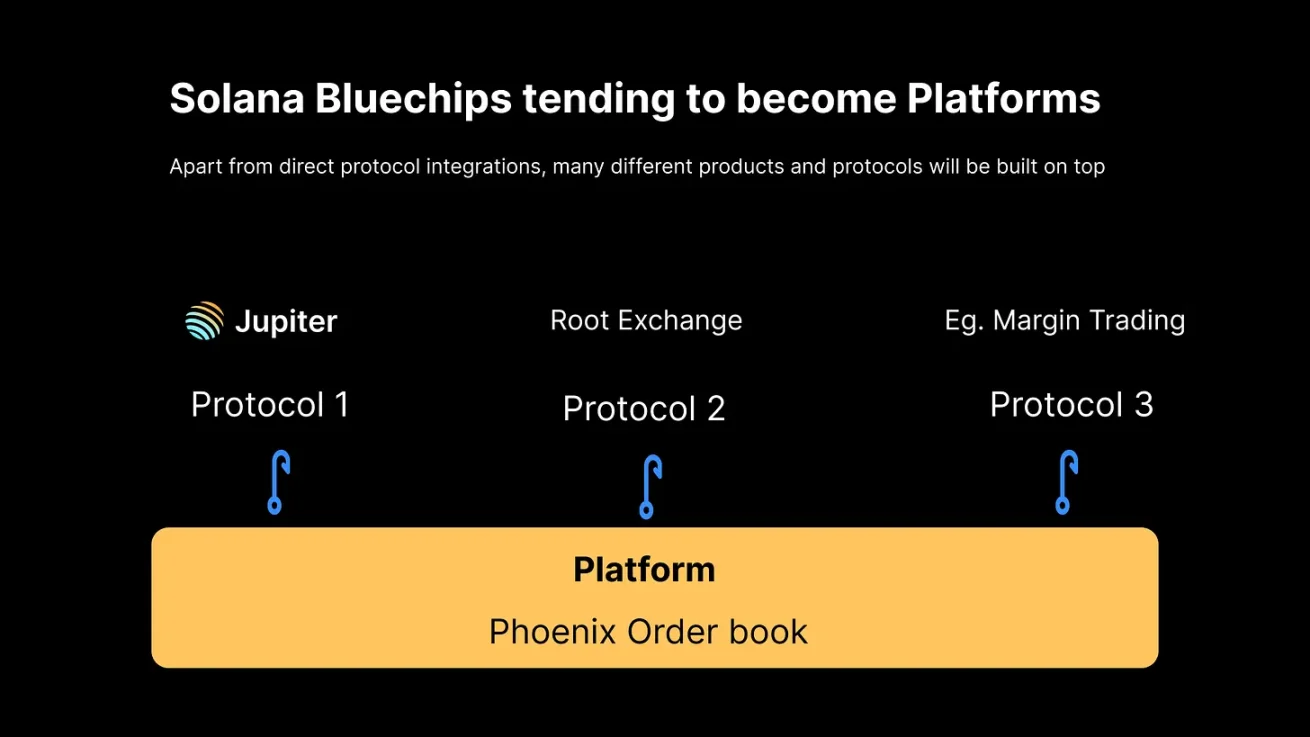
Topic 10: Interfaces (UX aggregators) will become more powerful
In crypto, attention is scarce, and aggregators command it. Whether it is DEX aggregators (like Jupiter/1inch), bridge aggregators (like Jumper/Bungee), or chain aggregators (like Polygon), they have become new and attractive narratives.
The principle is simple: aggregators control demand and capture user attention. While they don't currently accrue much value (most don't charge a fee), it's likely that the underlying protocols they abstract from will soon offer them a fee or share to gain priority or remain featured (similar to how brands pay Amazon to get advertise).
Interfaces add additional value on top of the on-chain protocols they facilitate. Through additional tools, such as UniswapX or Jupiter's DCA tool, interfaces can win the customer acquisition battle and capture value.
In fact, Solana has one of the most powerful aggregators, with Jupiter leading the way and others like Flexlend aggregating returns.
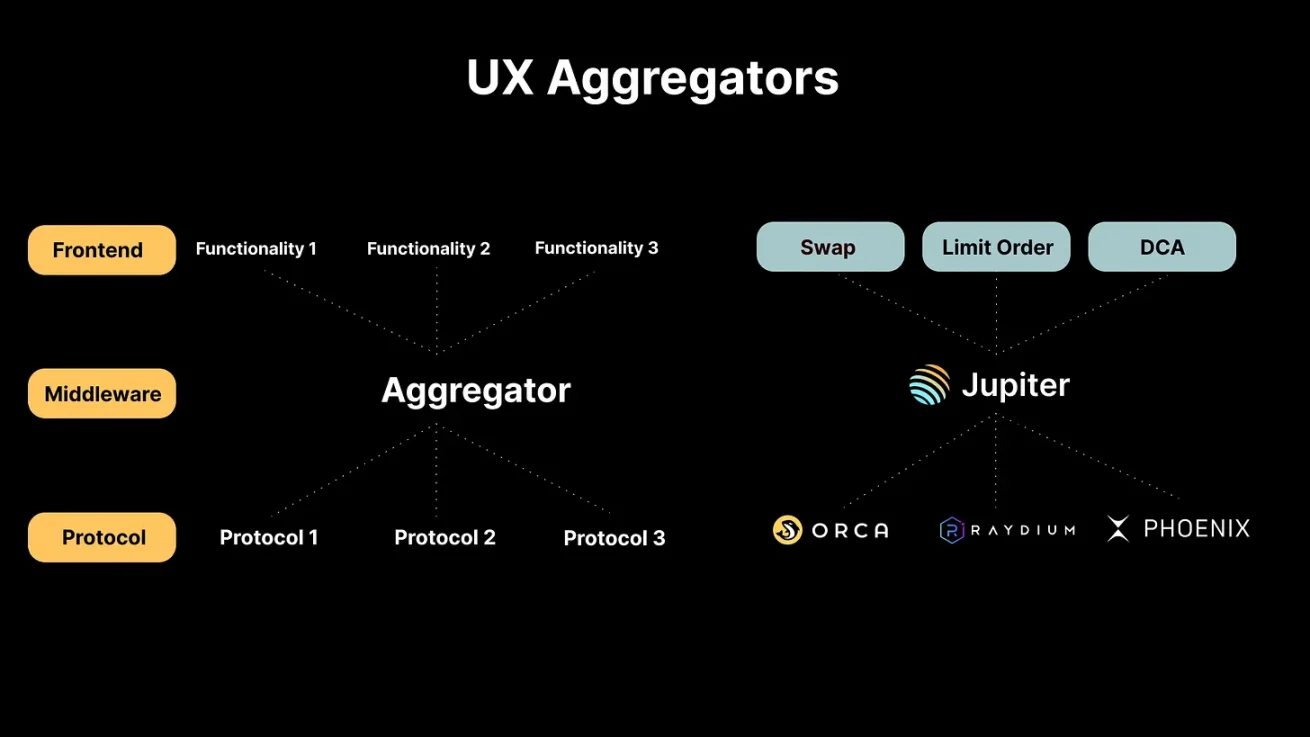
Alpha suggestions for Builder:
Opportunities for aggregation include:
- revenue aggregator
- Persistent aggregator
- Meme coin aggregator
- An everything DeFi aggregator like Instadapp for leverage, refinance and move positions
While there seems to be a blurry line between "platform" and "aggregator," the difference is that aggregators are the front end, while platforms are the foundation on which products are built. A protocol can be both at the same time, Jupiter is an example of this.
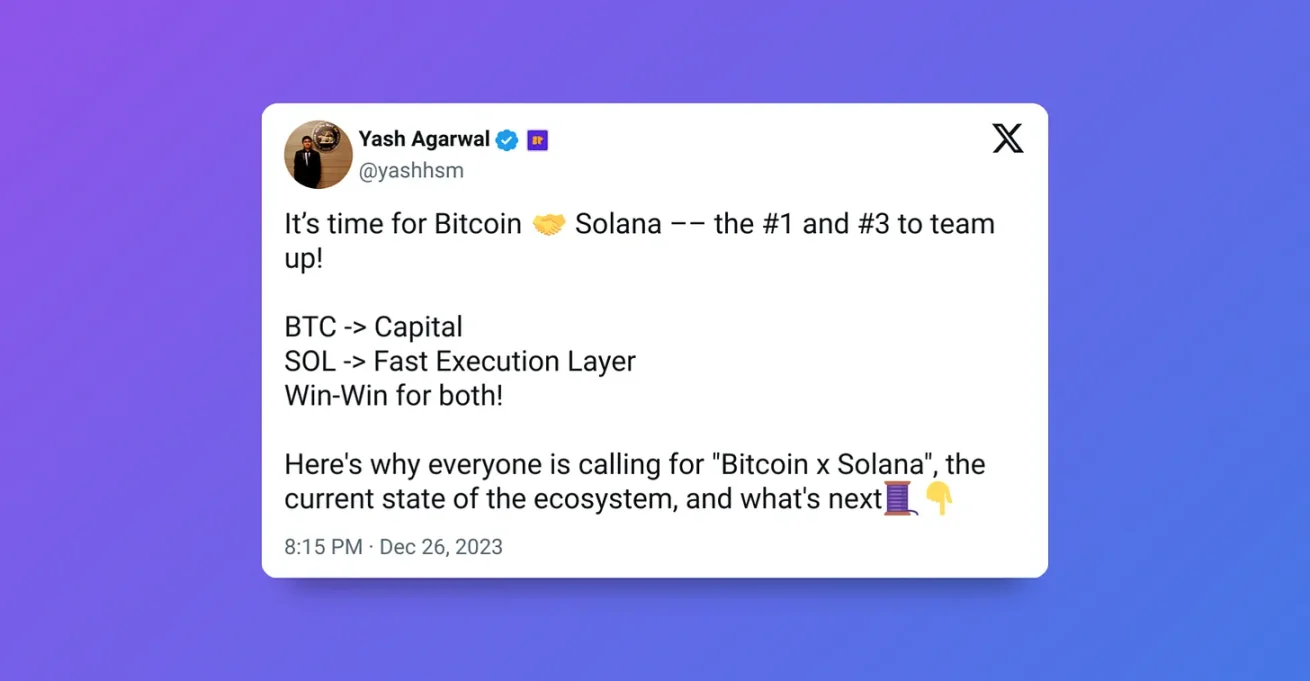
Conclusion: It’s time to seed Solana DeFi 3.0
Now it's time to build a new protocol on Solana. While EVM does serve as an inspiration, protocols should focus on core design innovation, participate in research discussions, and build true OPOS like Sanctum or Phoenix. We will make Solana DeFi even more different from Ethereum, taking inspiration from TradFi and seeing what can be built on-chain to take advantage of high capital turnover and speculation.
Infrastructure has finally reached a point where it can withstand large-scale activity. A lot of DeFi that failed before due to premature timing is now viable again. It will be exciting to see how this develops over the next few years.







